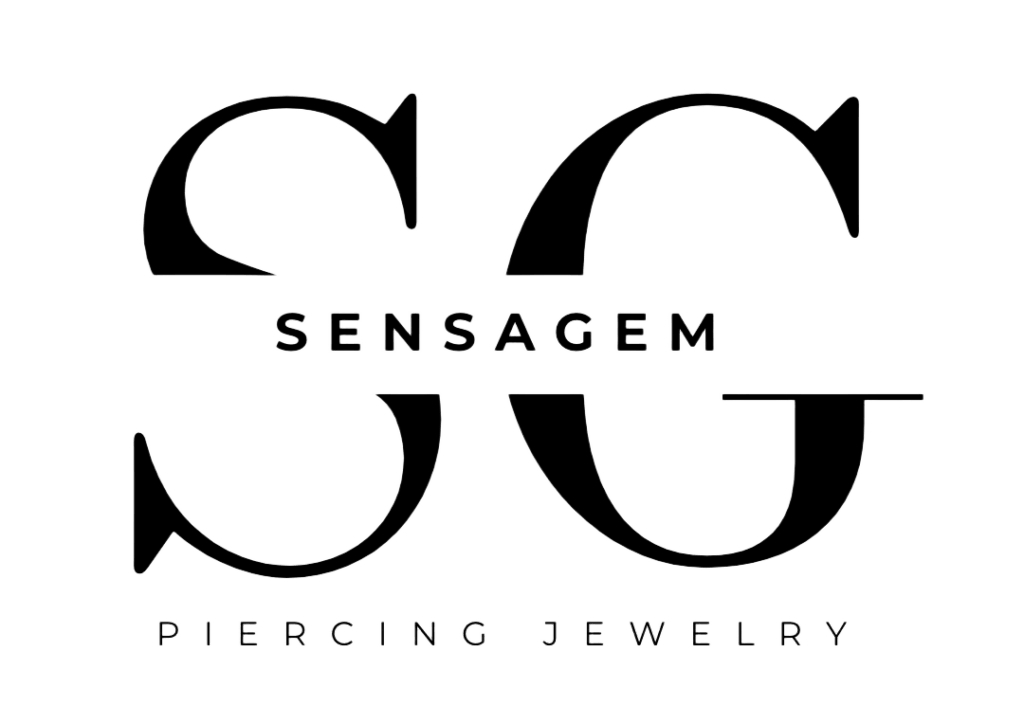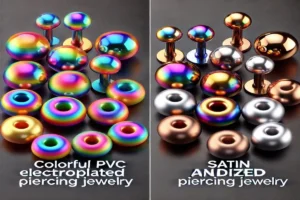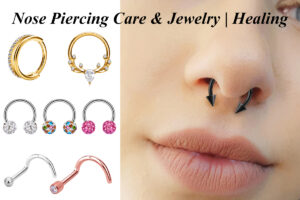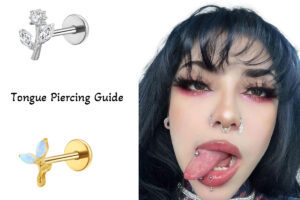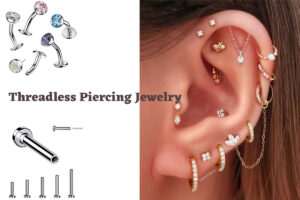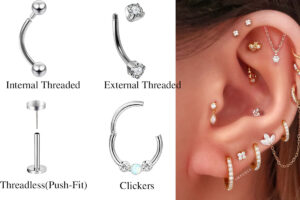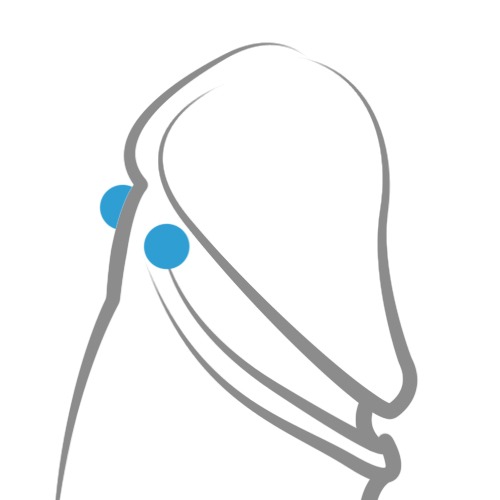
Introducción
Los piercings de freno han existido durante décadas, Pero en los últimos años, Han recibido atención renovada, no solo entre los entusiastas de la modificación del cuerpo, sino también en las comunidades perforadoras profesionales.. Conocido por su audaz colocación anatómica estética y única, Los piercings de frenum requieren precisión y selección cuidadosa de joyas para garantizar la seguridad, comodidad, y curación óptima.Este artículo está diseñado como una guía completa para profesionales de perforación.. Si ya tiene experiencia con piercings genitales o está buscando expandir su conjunto de habilidades, Exploraremos todo, desde la selección de materiales y los estilos de joyería hasta el tamaño., Consideraciones de curación, y cuidado posterior.
¿Qué es una piercing de freno??
El frenum es la delgada franja de piel ubicada en la parte inferior del pene., corriendo a lo largo del eje. A diferencia de otras piercings genitales, el frenum no pasa a través del tejido complejo, lo que generalmente hace que el procedimiento sea más sencillo, pero sigue siendo altamente sensible a la técnica. Los piercings de frenum se pueden hacer como una sola perforación o en múltiplos, a menudo se le conoce como una "escalera de freno".
Debido a su simplicidad anatómica, La perforación de frenores es a menudo una de las primeras piercings genitales masculinos aprendidos por aprendices bajo una estrecha supervisión. Pero todavía viene con una curva de aprendizaje en términos de colocación, elección de joyas, y consulta del cliente.
Opciones de joyería para piercings de freno
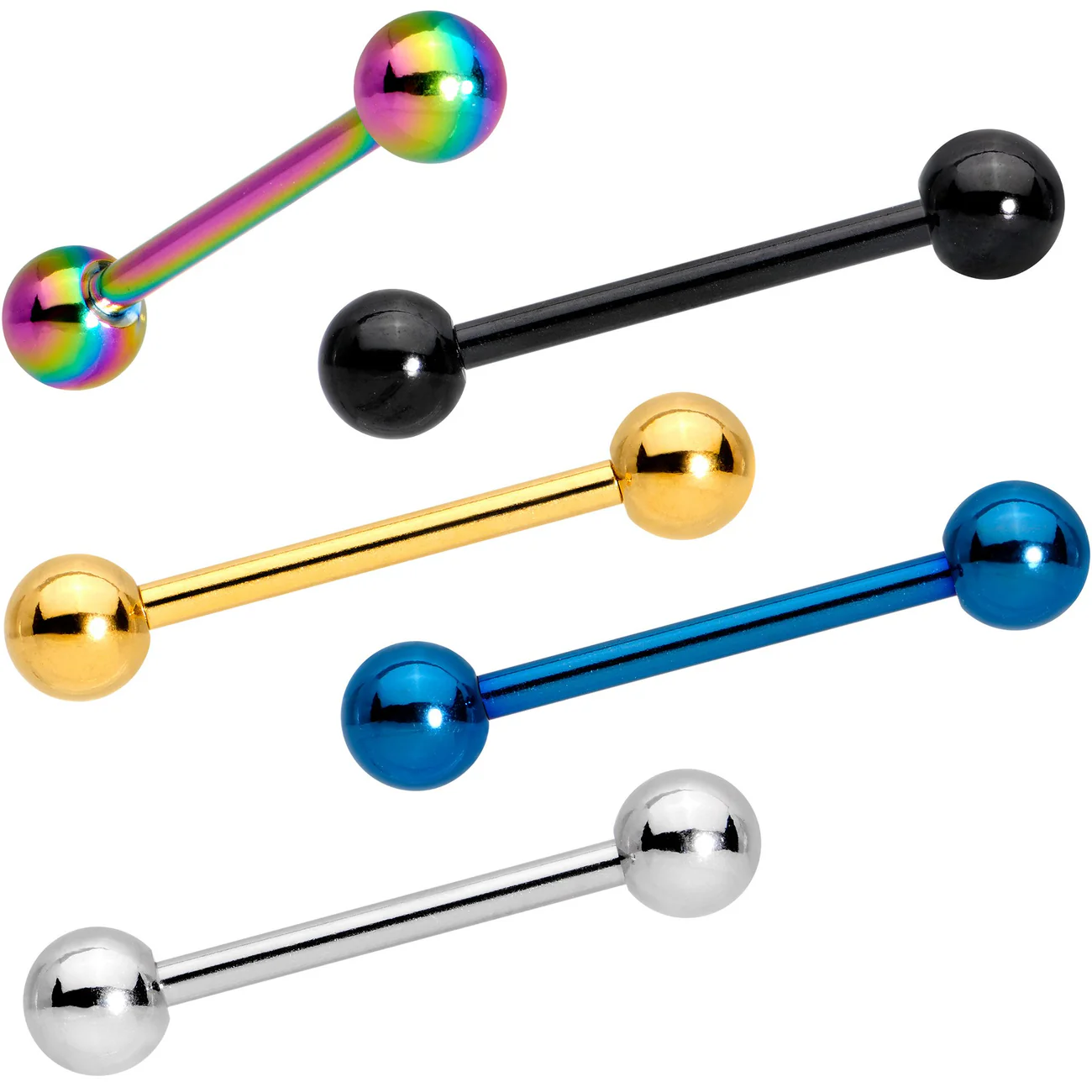
1. Barras rectas
Las barras rectas son, con mucho, el tipo de joyería más utilizado para los piercings iniciales. Ofrecen un seguro, ajuste simétrico y vienen en varios medidores y longitudes. Para piercings iniciales, Es estándar usar una barra un poco más larga para acomodar la hinchazón. Una vez que la perforación se ha curado, Los clientes a menudo dieron el tamaño de un ajuste de Snugger.
Dimensiones comunes:
Indicador: 12G a 10g es típico
Longitud: 14mm a 19 mm (dependiendo de la anatomía y la hinchazón)
Por qué funcionan bien:
Fácil de limpiar y quitar
Movimiento mínimo, Reducir el tiempo de curación
Disponible en materiales de alta calidad como el titanio ASTM F136 o el acero quirúrgico 316L
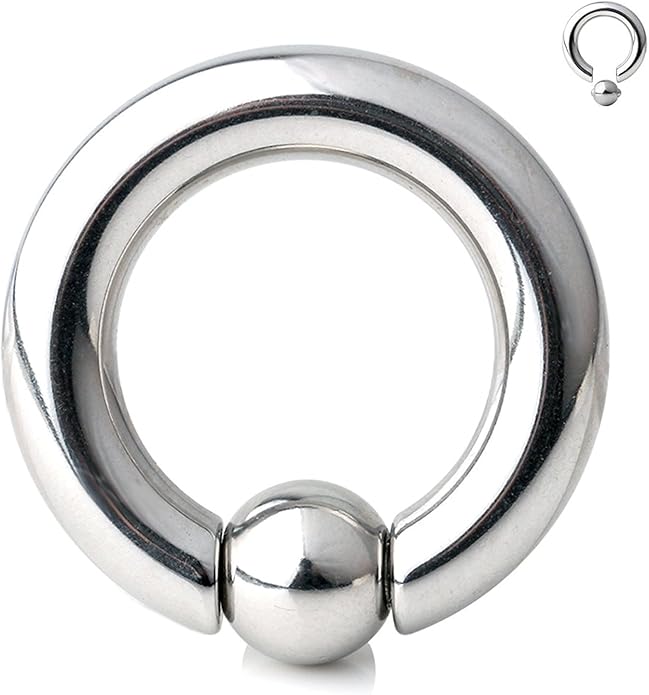
2. Anillos de cuentas cautivas (CBR)
Algunos clientes prefieren anillos de cuentas cautivas por razones estéticas o de comodidad, aunque no son tan comunes para los piercings iniciales. Los CBR pueden aplicar presión de rotación y generalmente se recomiendan para piercings bien curados.
Ventajas:
Más fácil de rotar para la limpieza (post-curado)
Muchas variaciones y materiales de diseño
Contras:
Puede prolongar la curación si se usa inicialmente
Puede ser difícil de eliminar sin herramientas
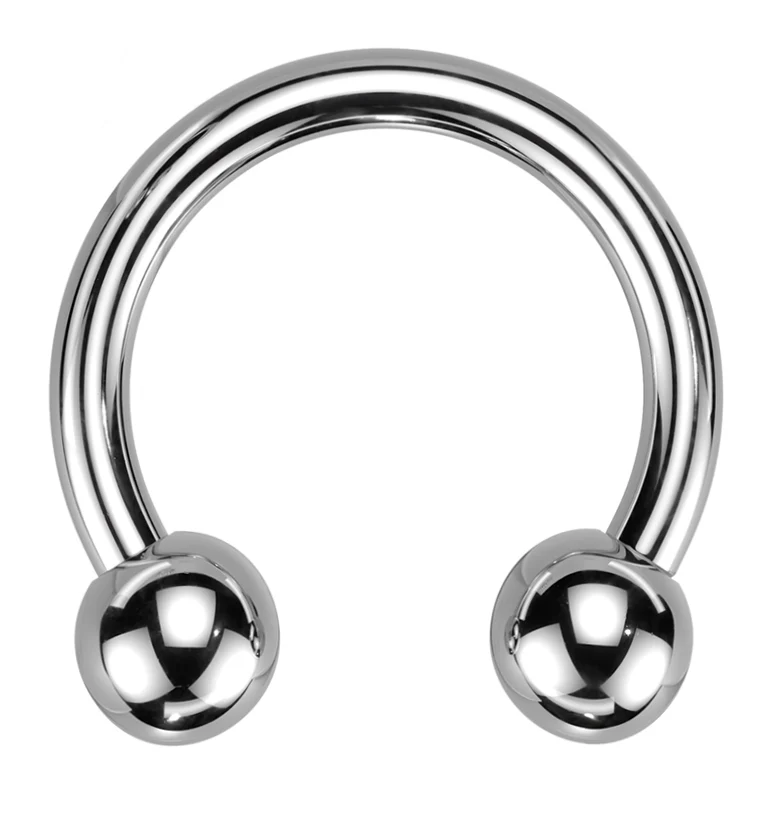
3. Barras curvas
Aunque no se usa tradicionalmente para los piercings de freno, Las barras curvas pueden ser una opción viable para clientes con variaciones anatómicas específicas o preferencias estéticas. Sin embargo, Generalmente no son la opción para los procedimientos iniciales.
Asuntos materiales: Titanio vs. Acero Quirúrgico
Una de las consideraciones más importantes en la joyería de Frenum es la calidad del material.. Los malos materiales pueden provocar fácilmente la irritación., reacciones alérgicas, o curación tardía, especialmente dada el área sensible involucrada.
ASTM F136 Titanio
Ventajas: Ligero, hipoalergénico, resistente a la corrosión
Ideal para: Clientes con sensibilidades metálicas o nuevos perforados en el cuerpo
Finalizar: Puede ser anodizado para la variación de color sin introducir recubrimientos
316L Acero Quirúrgico
Ventajas: Durable, asequible, ampliamente disponible
Advertencias: Contiene rastreo de níquel, generalmente seguro pero no ideal para individuos sensibles a níquel
Finalizar: De espejo pulido, brillo, aspecto profesional
Evite estos materiales
Metales misteriosos o acero de bajo grado
Joyas chapadas o recubiertas
Acrílico o plástico (especialmente para los piercings curativos)
En duda, siempre proporcione certificación de molino para sus joyas de acero de titanio o quirúrgico. Esto genera confianza con los clientes y mantiene su reputación como un perforador profesional.
Consideraciones de dimensionamiento y colocación
Obtener el calibre y la longitud correctos
El tamaño adecuado para las joyas de frenum no se trata solo de la estética, sino que juega un papel fundamental en la curación y la comodidad a largo plazo..
Indicador: 12GRAMO (2milímetros) y 10g (2.5milímetros) son estándar, Aunque algunos clientes avanzados pueden solicitar indicadores más pesados como 8G o 6G por razones estéticas o táctiles.
Longitud: Al perforar, Agregue al menos 2 mm a su medida para tener en cuenta la hinchazón. Por ejemplo, Si el pizca de tejido es de 10 mm, ir por una barra de 12 mm. Después de sanar, Los clientes pueden cambiar a una longitud más corta para un ajuste cómodo.
Las joyas de menor tamaño aumentan el riesgo de migración o incrustación, Mientras que las joyas de gran tamaño pueden crear un movimiento e irritación excesivos. Siempre mida con pinzas y verifique la anatomía en reposo y durante la excitación parcial.
La importancia de la simetría
La colocación simétrica es clave, especialmente cuando se planifican múltiples piercings de freno. Las escaleras necesitan un espacio constante (Por lo general, 10-15 mm de distancia) y una recta, alineación centrada.
Para garantizar imágenes limpias:
Use una regla flexible y marcadores seguros para la piel
Pregunte al cliente sobre planes futuros (p.ej., escalera completa vs. piercing único)
Marque todas las posiciones antes de perforar para verificar la alineación
Los clientes aprecian cuando se toman el tiempo para diseñar su escalera con equilibrio e intención. Es uno de esos pequeños toques que separan los buenos piercadores de los grandes.
Línea de tiempo de curación y cuidado posterior
Fases de curación
La perforación de frenos generalmente tiene un tiempo de curación más rápido en comparación con otras piercings genitales (acerca de 4 a 6 semanas, dependiendo de la salud del individuo, higiene, y nivel de actividad.
Etapa inicial (Semana 1–2):
Espere algo de hinchazón y ternura
Sangrado mínimo después del primer día
Los clientes pueden experimentar una mayor sensibilidad
De la mano media (Semana 3–4):
La descarga se reduce
Hinchazón disminuye
El tejido comienza a tensarse alrededor de las joyas
Etapa final (Semana 5–6):
El movimiento de joyas se vuelve más fácil
La costras y el enrojecimiento deben ser mínimos o desaparecer
Los clientes pueden considerar la reducción de personal si es necesario
Instrucciones de cuidados posteriores para clientes
Limpie dos veces al día con solución salina estéril o spray penetrante
Enjuague suavemente con agua tibia en la ducha (Sin pulverización directa)
Evite los jabones, alcohol, o peróxido de hidrógeno cerca del área
usar suelto, ropa interior transpirable (Idealmente algodón)
Abstenerse de la actividad sexual o la masturbación por al menos 2 semanas, o más si hay dolor o descarga
Actividad sexual es una de las causas más comunes de irritación o trauma durante la curación. Educar a los clientes para escuchar sus actividades de cuerpo y reanudar solo cuando la curación está en marcha. Los condones son muy recomendados para la protección durante la fase de curación, Incluso en relaciones monógamas.
Hablar con clientes: Proyectos y expectativas de escalera
La escalera de frenores, multiplicada, perforadas uniformemente a lo largo del eje, es un objetivo popular a largo plazo para muchos clientes. Pero esto no puede (y no debería) hacer todo a la vez.
Planificación de escalera segura
Empiece con uno o dos piercings
Espera hasta que estén Totalmente curado
Agregue nuevas perforaciones no más cerca de 10 mm a las existentes
Algunos clientes querrán presionar por múltiples piercings a la vez. Necesitará evaluar su anatomía, hábitos de higiene, y capacidad de curación antes de continuar.
Ser honesto: Múltiples piercings frescos de freno pueden ser incómodos durante la curación y aumentar las posibilidades de complicaciones. Es mejor construir una escalera con el tiempo que lidiar con el rechazo, cicatriz, o decepción.
Gestión de expectativas
Los piercings de frenum no son para todos. Movilidad de la piel, prepucio, o la asimetría anatómica puede afectar tanto la comodidad como la estética. Explica esto claramente, Y no dudes en decir que no si la anatomía no admite la perforación segura.
Opciones de joyería avanzadas y variaciones estéticas
Una vez que se cura la perforación, Los clientes a menudo regresan deseando personalizar o elevar su aspecto. Aquí es donde un perforador conocedor puede brillar realmente ofreciendo opciones más allá de la barra de acero básica..
Baras curvas vs. Barras rectas
Mientras que las barras rectas son estándar durante la curación, Algunos clientes curados prefieren barras curvas para un ajuste más discreto o anatómico. Las curvas también pueden reducir la fricción durante ciertas actividades o mejorar el ángulo estético, Dependiendo de cómo se sienta el perforador.
Ser cauteloso: Las barras curvas pueden girar ligeramente y cambiar el ángulo de presión. Si su cliente tiene una colocación ligeramente desigual o tejido migrado, Las barras rectas pueden ser la opción más segura a largo plazo.
Actualizaciones de titanio
316L El acero quirúrgico es común y asequible, Pero muchos perforadores profesionales ahora recomiendan Titanio ASTM F136, especialmente para:
Clientes con sensibilidades o alergias
Curación más rápida con menos reacciones
Acabado de alto polvo que resiste el empañado
Las joyas de titanio se pueden anodizar en colores personalizados: Gold, azul, púrpura, o incluso arcoiris. Esto agrega personalidad sin sacrificar la biocompatibilidad.
Trabajo personalizado
Algunos clientes con escaleras a largo plazo o múltiples piercings genitales exploran:
Ejes texturizados
Bolas decorativas (zapatillas con clavos, gemas, recubrimientos mate)
Conectores de cuentas Entre piercings
Como siempre, la forma debe seguir la función. Cualquier cosa agregada debe ser de bajo perfil y segura del cuerpo. Educar a los clientes sobre cómo las joyas intrincadas pueden afectar la movilidad, higiene, o sensación.
Solución de problemas de problemas comunes
Incluso los perforadores experimentados encuentran complicaciones de vez en cuando. Desglosemos los problemas relacionados con el frenum más comunes y cómo guiar a los clientes a través de ellos.
Hinchazón y incomodidad prolongada
Que preguntar:
¿Se han golpeado o enganchado las joyas??
¿Están limpiando con demasiada frecuencia o con productos duros??
Se ha reanudado la actividad sexual demasiado pronto?
Qué sugerir:
La solución salina cálida se remoja dos veces al día
Cambiar a ropa más suelta
Pausa temporal en la actividad sexual
Si el dolor o la descarga empeora después de 2 a 3 semanas, Evaluar los signos de infección y consulte a un profesional médico si es necesario.
Migración o rechazo
El frenum tiene un tejido más delgado que otras áreas. Malas de joyas pobres, trauma, o el movimiento excesivo puede conducir al rechazo.
Que buscar:
Enrojecimiento que no desaparecerá
Adelgazar la piel alrededor de la barra
Joyas visiblemente cambiantes
Que hacer:
Reducción o intercambio de titanio enhebrado interno
Sugerir la extracción y la curación antes de reiniciar
Documente el caso para su propio aprendizaje (con consentimiento del cliente)
Siempre priorice la salud a largo plazo del tejido para salvar la perforación.
Construyendo una base de clientes leales
Un poco de clientes, especialmente aquellos que persiguen escaleras llenas o trabajos genitales avanzados, a menudo son apasionados y leales. Por lo general, se invierten en:
Artesanía de calidad
Guía de expertos
Curación cómoda y cuidado posterior
Aquí le mostramos cómo construir relaciones reales con esta clientela de nicho:
Mantenga registros claros
Calibre, longitud, marca de joyas, Medidas de colocación, y progreso curativo para cada visita. Los clientes aprecian la profesionalidad, y hace que las perforaciones futuras sean mucho más suaves.
Ofrecer comentarios honestos
Los clientes confían en su experiencia anatómica. Si una solicitud no es segura o realista, explicar por qué y ofrecer alternativas. La mayoría de la gente preferiría escuchar "no ahora" que terminar con un mal perforador.
Celebrar hitos
Si alguien termina una escalera de freno de cinco piezas en el transcurso de un año, que vale la pena reconocer. Una pequeña recompensa o grito en las redes sociales (con consentimiento) Hace mucho tiempo.
Pensamientos finales
La joyería de perforación de frenum es más que un producto: es una artesanía que combina la anatomía, precisión técnica, y confianza del cliente.
Como perforadores, No solo somos agujeros. Estamos ayudando a las personas a expresarse, sentirse bien en sus cuerpos, y explorar nuevos lados de intimidad y estética. Cuando se hace bien, Una piercing de freno es de bajo riesgo, Alta recompensa, y una poderosa puerta de entrada al mundo del arte corporal íntimo.
Si está comenzando a ofrecer piercings genitales o ya tiene años de experiencia., mantenerse afilado con su técnica, materiales, y la comunicación siempre te distingue.
